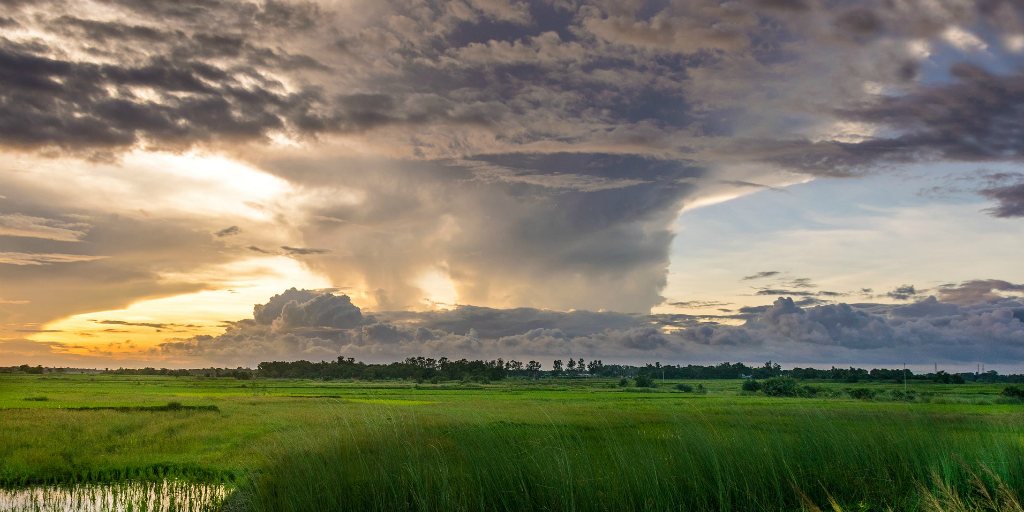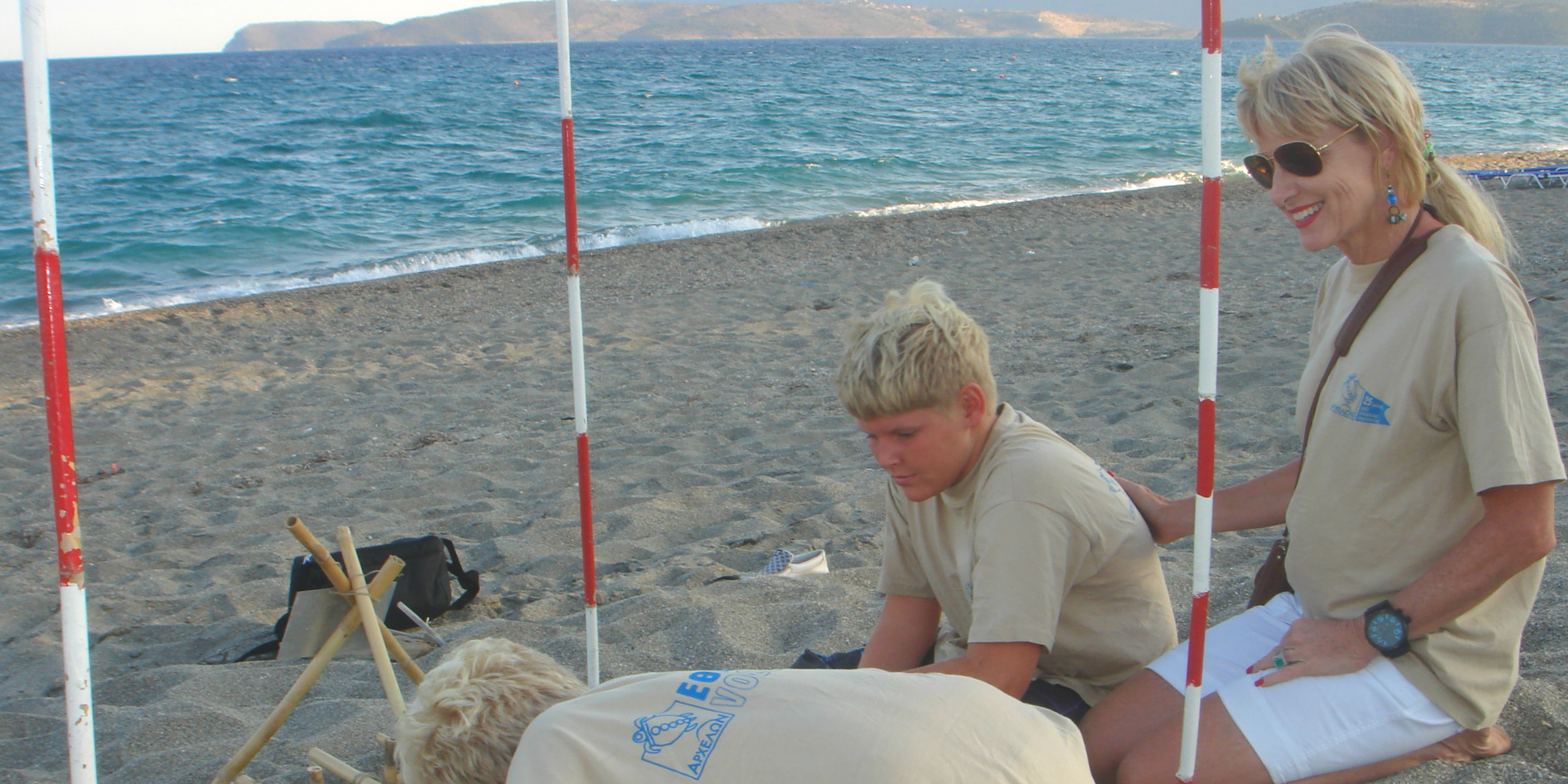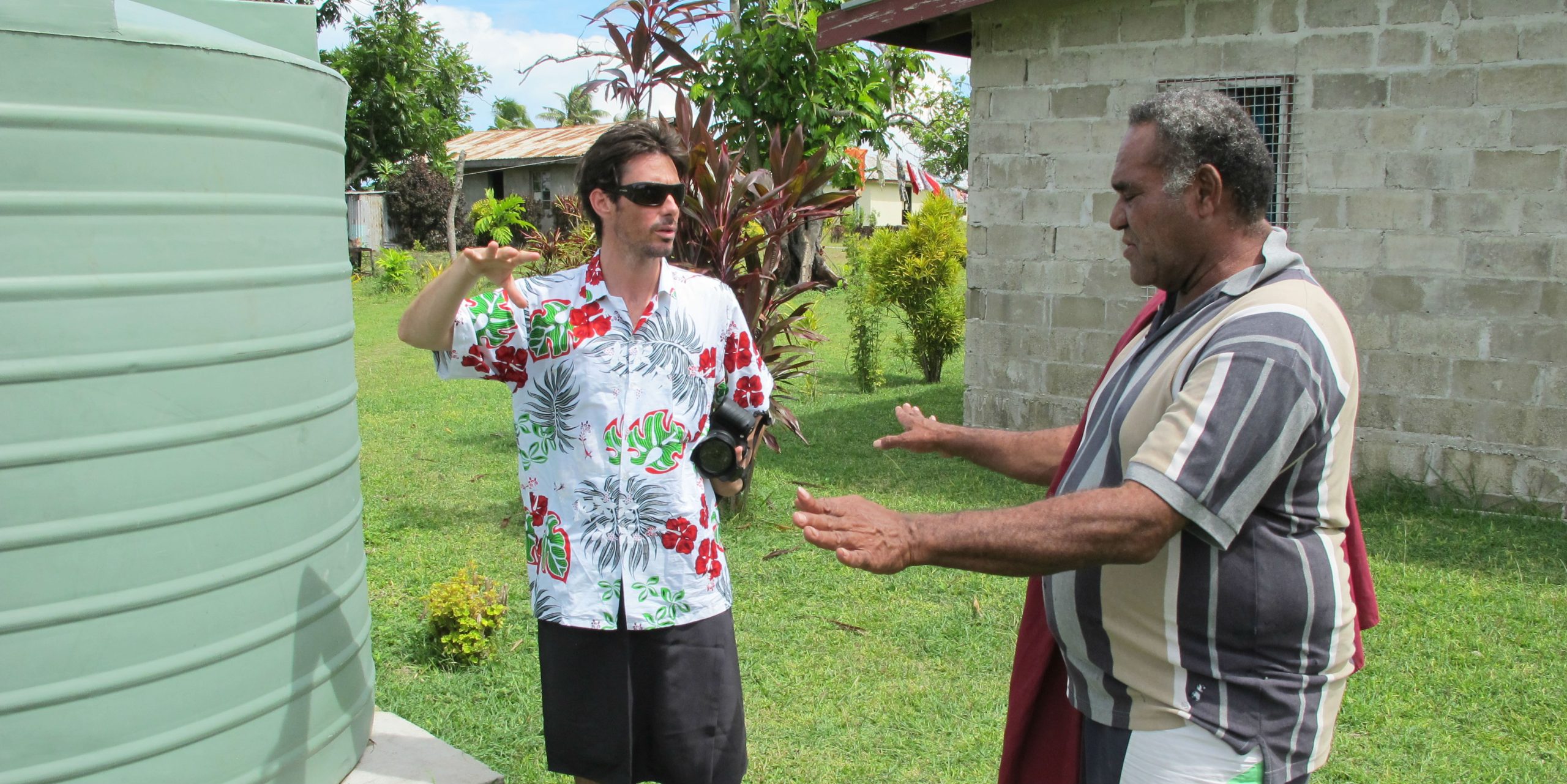
Why reducing your carbon footprint can make a big impact
GVI
Posted: January 24, 2022
Our carbon footprint, the amount of greenhouse gases like carbon dioxide and methane that are generated by our actions, has a massive impact on global warming.
Think of your carbon footprint like the impressions you’d leave behind after walking through wet cement: once made, the impressions are trapped, sealed in. But there’s a lot you can do to smooth the impression out again and help address the climate crisis. And we’re going to show you how.
We call the trapping of heat by greenhouse gases in Earth’s atmosphere the Greenhouse Effect. The UN explains our role in the Greenhouse Effect process like this:
“Human activity is resulting in the increased emission of so-called greenhouse gases (GHGs) which, unlike other atmospheric gases such as oxygen and nitrogen, become trapped in the atmosphere, unable to escape the planet. This energy returns to the surface, where it is reabsorbed. Because more energy enters than exits the planet, surface temperatures increase until a new balance is achieved.”
Making footprints is easy, and we sometimes leave them behind without even realising it. But that rising temperature on Earth, global warming, is playing havoc with weather systems and bringing us closer to natural disasters.
It’s clear we need to take action for the climate. First step? Let’s understand the basics.
What is your carbon footprint?

Original image: “Sand Foot Prints” by phoenixsierra0 is licensed under CC BY-SA 2.0
Simply put, a carbon footprint refers to the total amount of greenhouse gases you produce while going about your daily life.
Carbon dioxide is a by-product of burning fuels like coal, oil and wood. While you may not be loading fuels into a burner every day, your daily activities can make use of these fuels without you knowing it. Think of the petrol that powers your car and produces tons of carbon dioxide every time you take a trip.
Every time you drive to work or school, turn on your heater, or even when you buy a burger – because cooking uses fuel, too – your carbon footprint increases.
Since carbon dioxide is a greenhouse gas – a gas that adds to global warming – our contribution to carbon emissions can have a negative impact globally.
Have a look at these carbon-footprint facts, and some of the major effects of global warming:
- Extreme weather is becoming more commonplace, with many countries experiencing the hottest summers and coldest winters on record.
- The Earth’s poles, which are covered in ice, are melting, causing sea levels to rise and damaging ecosystems.
- Animal populations have declined by over 70% in the last 50 years.
- Some plant and animal species are moving to higher, cooler areas in order to survive. The ripple effect on ecosystems is huge.
Reducing your carbon footprint matters

Original photo: “Nature” by Waqutiar Rahaman is licensed under CC BY-SA 2.0.
Without taking the time to reduce our daily, weekly and yearly carbon footprints, the fast pace at which global warming is affecting Earth will continue, and we can expect:
- the extinction of more wildlife due to changing ecosystems and habitat loss
- an increased occurrence of destructive weather events – like hurricanes, cyclones, droughts and floods
- more people being displaced and negatively affected by the effects of climate change.
Many countries are already experiencing more frequent droughts, and this has had a significant effect on the well-being of people who live here.
And what is the biggest contributor to global warming today?
Cowspiracy, a documentary film that investigates meat- and dairy farming, argues the agriculture industry:
- is the number one cause of climate change
- uses ⅓ of the Earth’s freshwater
- has contributed to 91% of the destruction of rainforests
- uses 45% of the Earth’s total land.
Even if you choose to keep buying produce from large-scale farms, you can offset your carbon emissions by becoming more environmentally friendly in other aspects of your life – like by walking or biking to work instead of driving.
You’ll make the biggest impact if you try to reduce your carbon footprint in every area of your day-to-day- activities. And there are lots of everyday things that you can do to reduce yours, and add to a positive global impact.
Tracking your carbon footprint

The best way to start reducing your carbon footprint is to figure out how big it is, and then decide how much you’re willing to reduce it by. But how can you keep track of your carbon footprint?
An online carbon-footprint calculator is an easy way to find out how big your carbon footprint is.
There are many free versions online. Take a look at the World Wildlife Fund’s carbon-footprint calculator here – try calculating your footprint now!
How to reduce your carbon footprint
Once you’ve calculated your carbon footprint, you might be taken aback by how high it is, but fired up to start making some positive changes.
There are tons of ways that we can start reducing our carbon footprints right now, but we can’t make an impact overnight!
You’ll immediately see your bin being filled with less waste as you opt for items with less packaging, and place food scraps in a composter. You may even feel the extra weight of your wallet once you start a veggie garden, and leave behind the carbon emissions linked to store-bought produce.

But it’s only once these efforts add up that you’ll start to see a positive impact that spreads beyond your own front door.
So sticking with your environmentally-friendly changes is just as important as starting in the first place! Luckily, there are lots of options to choose from, so you can start making an impact in a way that’s convenient for you too.
Let’s take a look at some practical ways that you can reduce your carbon footprint today:
- Make use of energy-saving light bulbs in your home.
- Swop to a plant-based diet, or practise meatless Mondays. This can cut your carbon footprint by up to 50%.
- Find ways to reuse your food waste – dinner leftovers make for great lunches!
- Support marine and wildlife conservation projects and contribute to efforts to make a positive impact.
- Knowledge is power. Do your homework on climate change and its effects.
- Support Earth Hour, and up your impact every year.
- Instead of leaving appliances and lights on standby, switch them off at the plug as soon as you’re done using them.
- Dust off your bicycle and cycle to work or school. If that’s not possible, walk or start a lift club.
- Consider using renewable energy – like solar or wind power – instead of energy generated by coal or gas.
- Reduce, reuse, and recycle all the plastic glass and paper that you would have thrown away.
Choose actions that are the most manageable for you and your lifestyle – they motivate you to challenge yourself. You’ll find even bigger ways to drop your carbon emissions once you see the effect of smaller changes first.
Today activities that reduce your carbon footprint are being backed by players in all types of environments.

You’ll spot stores that are reducing the amount of packaging they use, employers that offer charging spots for electric cars, and governments who are upping their provision of renewable energy.
There’s really no excuse not to hit the ground running and make some carbon-footprint friendly changes in your lifestyle right away.
Because, what’s more important than leaving behind something that says “I was here”, is leaving behind a healthy planet that benefits from your presence.
Take a look at GVI’s award-winning wildlife and marine conservation programs that offer tons of opportunities to take your carbon footprint to an all-time low.

